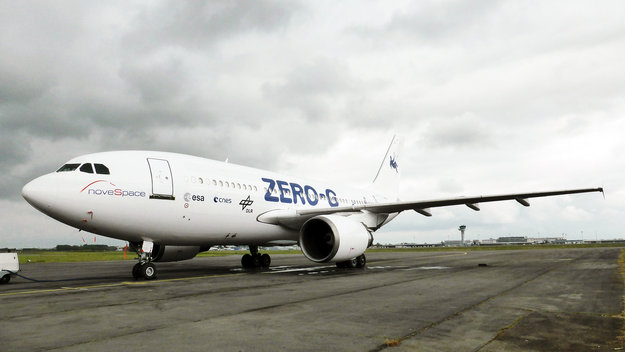.
MOON AND MARS ON A PLANE
Who wouldn’t want to run an experiment in lunar or martian gravity? ESA is offering European researchers the chance to test their theories on aircraft flights that offer 20 seconds of reduced gravity.
“Partial-gravity flights are rare and offer a unique opportunity to conduct research in conditions that have only been reproduced a handful of times,” notes ESA’s head of human research, Jennifer Ngo-Anh.
ESA often conducts ‘parabolic’ flights using a refitted Airbus A310 that flies up and down on a rollercoaster ride. At the top of the curve the passengers and experiments experience reduced gravity.
Commonly, the pilots climb at 45° to offer zero-gravity for 20 seconds at a time. By adjusting the angle, the pilots can simulate other gravity levels – from the Moon’s one sixth of what we feel on Earth to a martian one third of Earth’s gravity.
Parabolic flights are useful for scientific and technology researchers, offering the unique opportunity to control experiments in reduced gravity with humans as test subjects.
“In addition to being the only way to test experiments in gravity levels found on the Moon and Mars, parabolic flights that simulate reduced gravity are exciting for everyone involved and they offer more experiment time than ‘normal microgravity’ flights,” says Jennifer. “We are looking forward to a great mix of experiments from around the world.”
How do you walk on Mars?
Researchers from previous experiments run on reduced-gravity parabolic flights have had their results published in the prestigious Nature magazine. A novel experiment investigated how astronauts would walk on Mars – the ideal walking speed turns out to be around half the speed on Earth – important information for planning missions to the Red Planet.
What would you like to know about how humans adapt to living in reduced gravity?
The deadline for submissions is 2 December, with the flights planned for 2018.
Quelle: ESA



